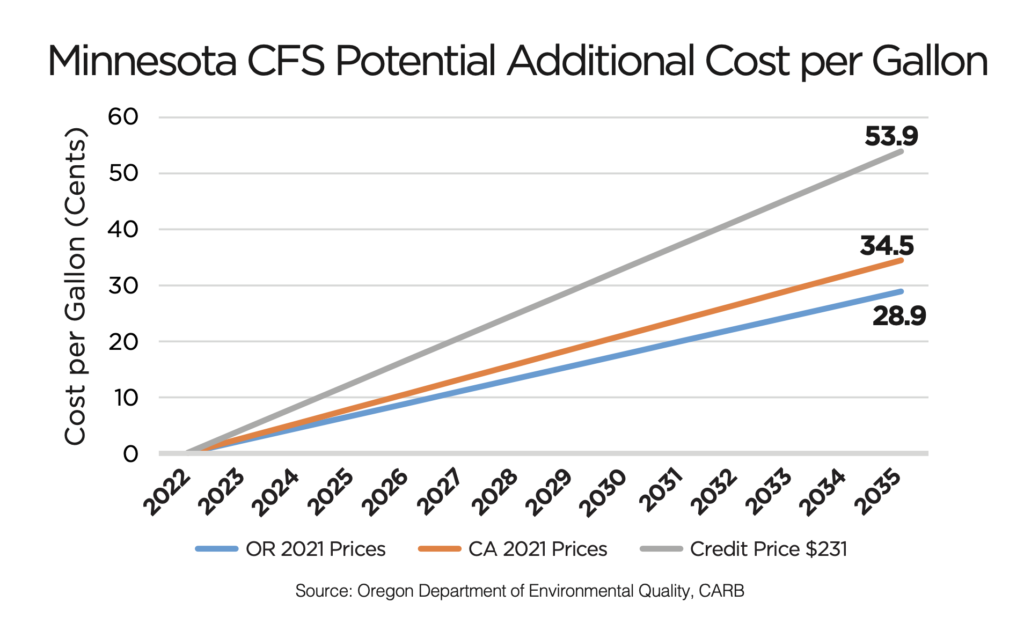Elections have consequences
What Minnesotans can expect from Democrat-led environmental policies.
On Election Day, Minnesota Democrats won the Governor’s mansion, the House of Representatives, and the State Senate, giving the DFL total control of the legislature for at least the next two years. This Democratic trifecta will almost certainly have important implications for energy policy, including regulations on the cars we are able to purchase in the future and the fuel we put in them.
California car mandates
Gov. Walz’s reelection means Minnesota will enact California’s regulations requiring auto manufacturers to deliver a certain number of Zero Emission Vehicles (ZEVs), which essentially means electric cars, to the state. Auto dealers would be required to stock approximately 14,000 vehicles in Minnesota once the rules go into full effect.
However, it is important to keep in mind that the regulation requiring electric vehicles to be stocked in Minnesota would only be in effect for one year because California has updated its ZEV mandates to ban the sale of new internal combustion engines in 2035.
Under the Clean Air Act, states must either follow federal environmental standards or California’s standards. There is no federal ZEV mandate, which means Minnesota would either need to adopt California’s ban on selling new gas and diesel-powered engines or allow the current electric vehicle mandates to expire after one model year.
Looking forward, it seems unlikely that liberals in the state legislature would pass a law requiring Minnesota to adopt California’s ban on selling new gas engines in the next two years because such a move would be out of step with what the electorate expects them to do. In the winter 2022 Thinking Minnesota Poll, nearly three-quarters of voters opposed following California’s ban, with 51 percent strongly opposing it. Our most current poll in this issue echoes that sentiment.
However, the legislature will almost certainly pass legislation that opens the door for the Walz administration to adopt these rules in the future by clearly granting the Minnesota Pollution Control Agency (MPCA) the authority to adopt California’s gas engine ban through the administrative rulemaking process.
Time will tell if the Walz administration will decide to enact California’s ban on the sale of new gas- and diesel-powered engines, but unified Democratic control will almost certainly mean the Walz administration, or any future administration, will be able to impose these rules if and when they decide to do so.
Gas prices
Democrats will likely push to enact a California Fuel Standard (CFS) in Minnesota, which will increase gasoline prices. But before considering the consequences of this policy, it helps to take a step back to examine the major factors that affect gas prices. Overall, gas prices are driven by the global forces of crude oil supply and demand and refining capacity, which allows for crude oil to be manufactured into useful products like diesel fuel, gasoline, and jet fuel.
There is little that Minnesota can do to influence global supply because Minnesota is not an oil-producing state. However, Minnesota is a major corridor for crude oil imports from Canada, and more pipelines and refining capacity could help boost supplies and put downward pressure on prices.
What is the standard?
The California Fuel Standard regulations originated (you guessed it) in California, where the policy is called a Low Carbon Fuel Standard (LCFS). The CFS is a complicated cap-and-trade system created by the government aimed at lowering emissions of greenhouse gases (GHGs).
Under the regulations, the government sets a limit on the permissible amount of greenhouse gases that can be emitted by transportation fuels, which is called a Carbon Intensity (CI) score for fuels sold in the state, with the regulations becoming stricter every year.
As the regulations become stricter, the cost of complying with them increases. An analysis from Stillwater Associates determined that the LCFS increased California’s gas prices by 22 cents per gallon in 2020.
In our March 2022 report, “Gas Station Inflation,” American Experiment used the formula provided by the Oregon Department of Environmental Quality to estimate the impact enacting a CFS would have on Minnesota gas prices. We determined that gas prices could increase between 29 and 54 cents per gallon by 2035 as a result of the program.

The additional costs resulting from adopting the California Fuel Standard in Minnesota would increase yearly costs for Minnesota families and businesses by $210 to $568 per household. Rural households will likely experience higher costs because they tend to drive further than urban and suburban households.
It is uncertain whether this bill will pass into law. The DFL holds the State Senate by a slim, one-vote majority, and this is due to victories in a handful of seats in Greater Minnesota that will be crucial to retaining control of the legislature in the coming years.